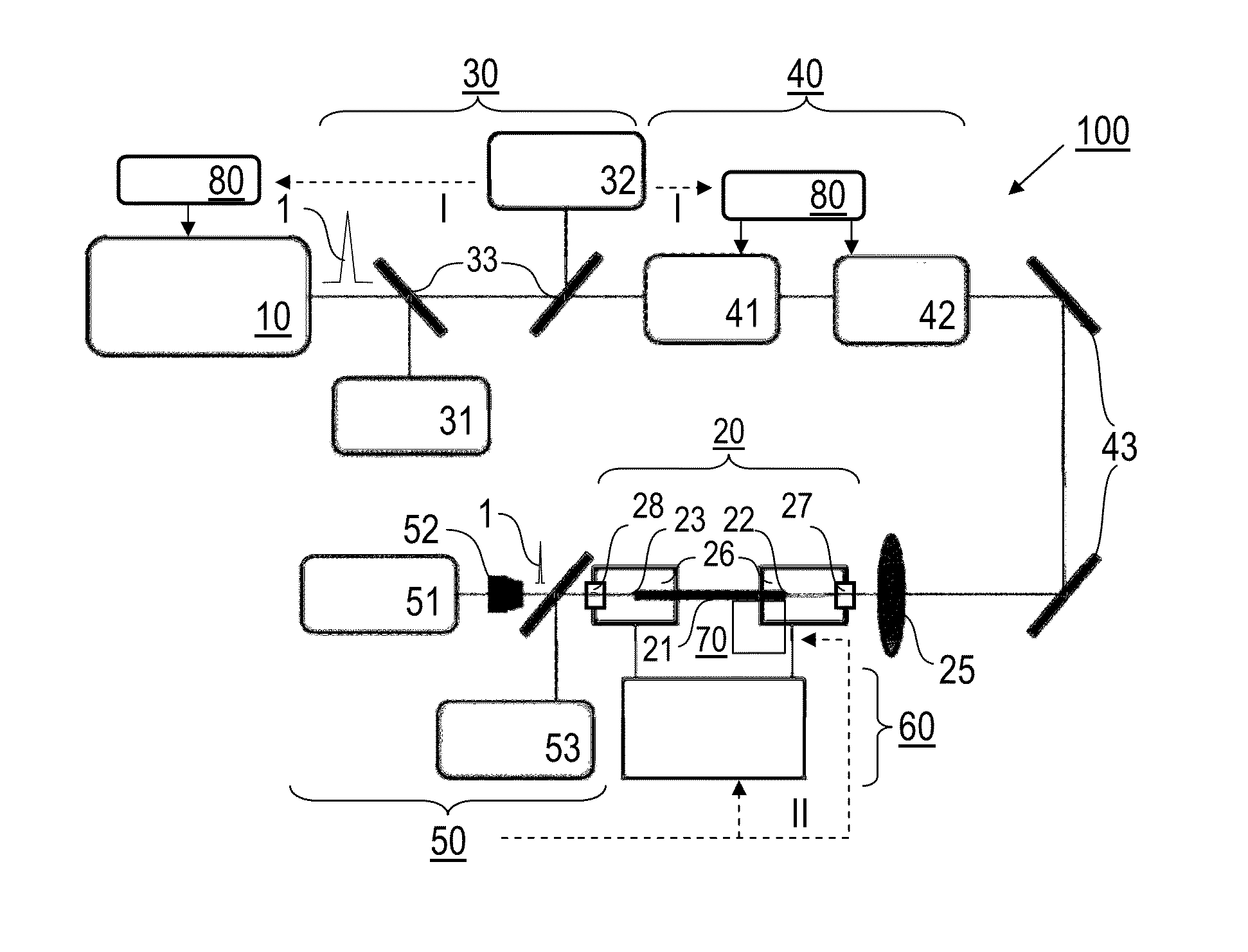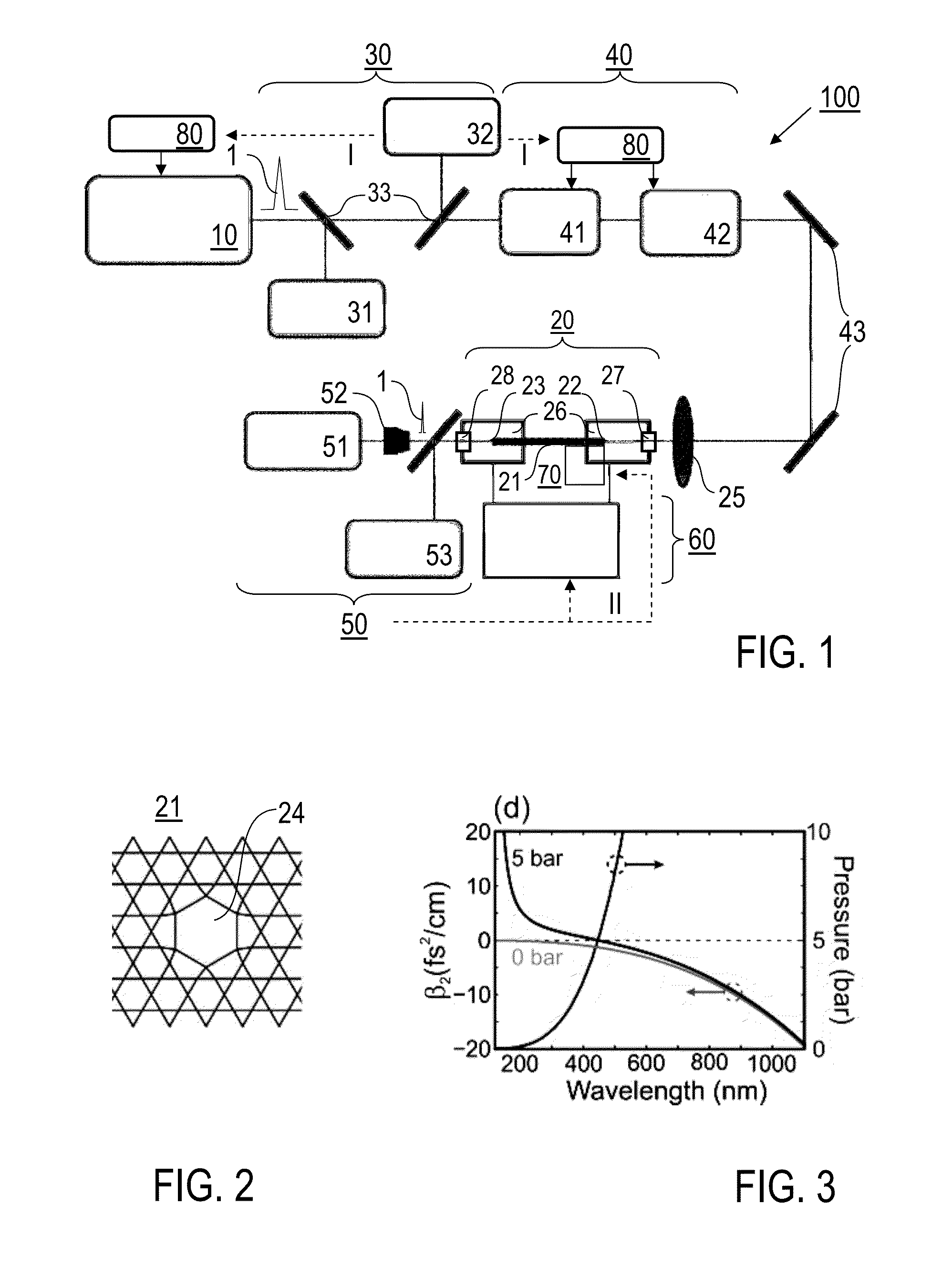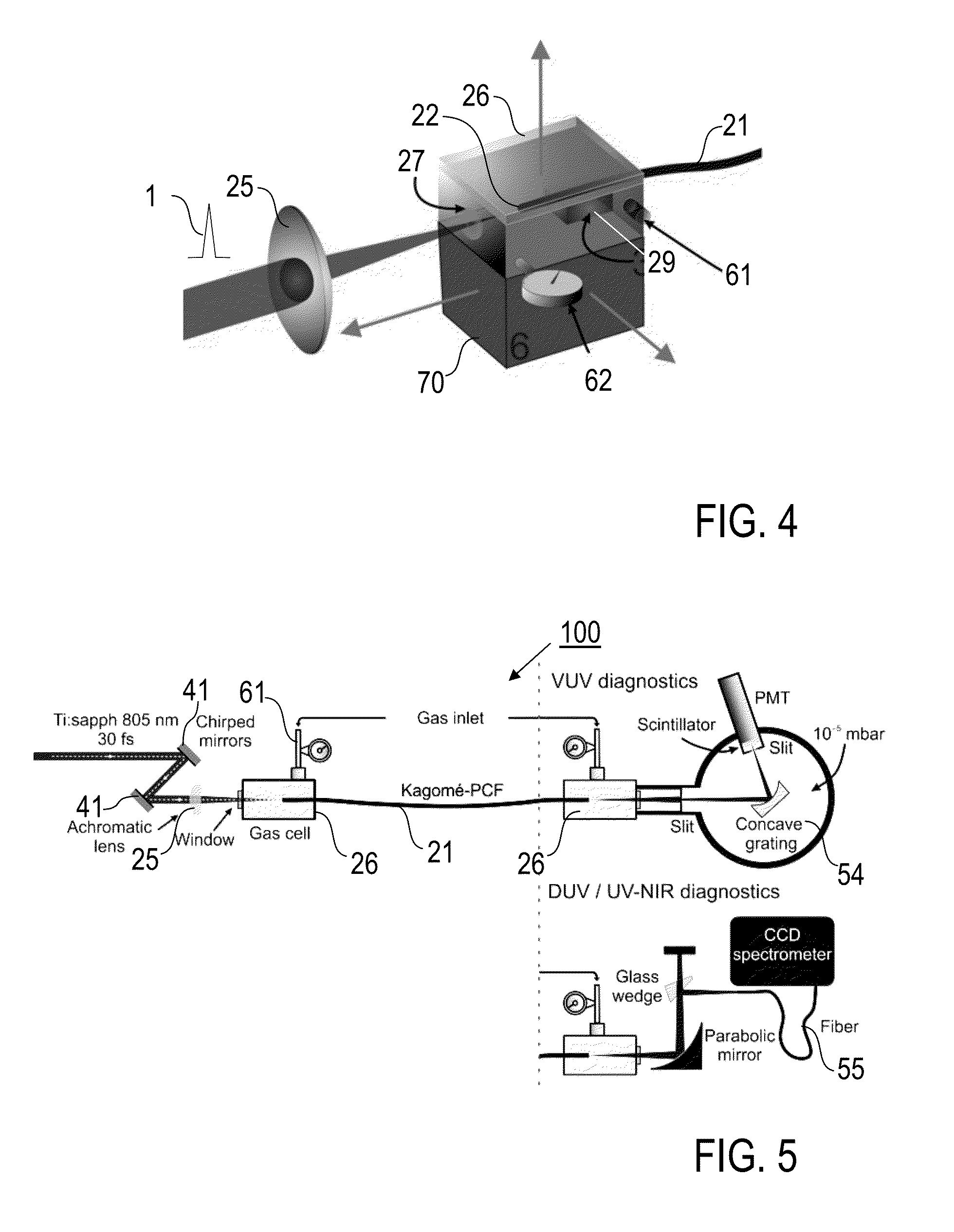Method and device for creating supercontinuum light pulses
a supercontinuum and light pulse technology, applied in the direction of instruments, basic electric elements, laser details, etc., can solve the problems of low conversion efficiency, inability to produce a continuum covering the uv-vuv spectral region, and extension of short-wavelength edges into difficult-to-access areas, etc., to improve long-term stability, simplify controllability, and reduce procedural conditions. requirements
- Summary
- Abstract
- Description
- Claims
- Application Information
AI Technical Summary
Benefits of technology
Problems solved by technology
Method used
Image
Examples
Embodiment Construction
[0065]The invention uses a pulse guiding medium that provides a Raman nonlinearity and optionally the optical Kerr effect. The pulse guiding medium has an anomalous dispersion within part of the wavelength range of its operation. Such conditions can be achieved e.g. in a gas-filled hollow waveguide, such as a hollow-core PCF. Preferred embodiments of the invention are described in the following with exemplary reference to the use of the Kagomé-lattice PCF. However, it is emphasized that the invention also can be implemented using other types of hollow optical waveguide devices, like other PCFs or capillaries.
[0066]Furthermore, it is emphasized that the invention is not restricted to the presented examples and operation parameters, but rather can be implemented with modified conditions, in particular in view of the description of excitation of Raman coherence presented below. With the practical application of the invention, the optical setups of the illustrated embodiments can be mod...
PUM
 Login to View More
Login to View More Abstract
Description
Claims
Application Information
 Login to View More
Login to View More - R&D
- Intellectual Property
- Life Sciences
- Materials
- Tech Scout
- Unparalleled Data Quality
- Higher Quality Content
- 60% Fewer Hallucinations
Browse by: Latest US Patents, China's latest patents, Technical Efficacy Thesaurus, Application Domain, Technology Topic, Popular Technical Reports.
© 2025 PatSnap. All rights reserved.Legal|Privacy policy|Modern Slavery Act Transparency Statement|Sitemap|About US| Contact US: help@patsnap.com



